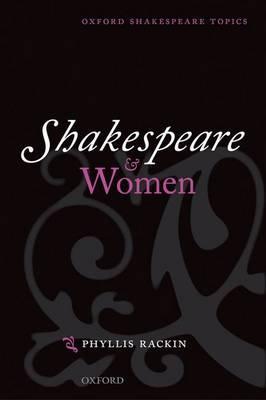Shakespeare and Women

Shakespeare and Women
Chapter 1, 'A Usable History', analyses the implications and consequences of the emphasis on patriarchal power, male misogyny, and women's oppression that has dominated recent feminist Shakespeare scholarship, while subsequent chapters propose alternative models for feminist analysis. Chapter 2, 'The Place(s) of Women in Shakespeare's World', emphasizes the frequently overlooked kinds of social, political, and economic agency exercised by the women Shakespeare would have known in both Stratford
and London. Chapter 3, 'Our Canon, Ourselves', addresses the implications of the modern popularity of plays such as The Taming of the Shrew which seem to endorse women's subjugation, arguing that the plays-and the aspects of those plays-that we have chosen to emphasize tell us more about our own
assumptions than about the beliefs that informed the responses of Shakespeare's first audiences. Chapter 4, 'Boys will be Girls', explores the consequences for women of the use of male actors to play women's roles. Chapter 5, 'The Lady's Reeking Breath', turns to the sonnets, the texts that seem most resistant to feminist appropriation, to argue that Shakespeare's rewriting of the idealized Petrarchan lady anticipates modern feminist critiques of the essential misogyny of the Petrarchan
tradition. The final chapter, 'Shakespeare's Timeless Women', surveys the implication of Shakespeare's female characters in the process of historical change, as they have been repeatedly updated to conform to changing conceptions of women's nature and women's social roles, serving in ever-changing guises as
models of an unchanging, universal female nature.
PRP: 231.02 Lei
Acesta este Pretul Recomandat de Producator. Pretul de vanzare al produsului este afisat mai jos.
207.92Lei
207.92Lei
231.02 LeiIndisponibil
Descrierea produsului
Chapter 1, 'A Usable History', analyses the implications and consequences of the emphasis on patriarchal power, male misogyny, and women's oppression that has dominated recent feminist Shakespeare scholarship, while subsequent chapters propose alternative models for feminist analysis. Chapter 2, 'The Place(s) of Women in Shakespeare's World', emphasizes the frequently overlooked kinds of social, political, and economic agency exercised by the women Shakespeare would have known in both Stratford
and London. Chapter 3, 'Our Canon, Ourselves', addresses the implications of the modern popularity of plays such as The Taming of the Shrew which seem to endorse women's subjugation, arguing that the plays-and the aspects of those plays-that we have chosen to emphasize tell us more about our own
assumptions than about the beliefs that informed the responses of Shakespeare's first audiences. Chapter 4, 'Boys will be Girls', explores the consequences for women of the use of male actors to play women's roles. Chapter 5, 'The Lady's Reeking Breath', turns to the sonnets, the texts that seem most resistant to feminist appropriation, to argue that Shakespeare's rewriting of the idealized Petrarchan lady anticipates modern feminist critiques of the essential misogyny of the Petrarchan
tradition. The final chapter, 'Shakespeare's Timeless Women', surveys the implication of Shakespeare's female characters in the process of historical change, as they have been repeatedly updated to conform to changing conceptions of women's nature and women's social roles, serving in ever-changing guises as
models of an unchanging, universal female nature.
Detaliile produsului








